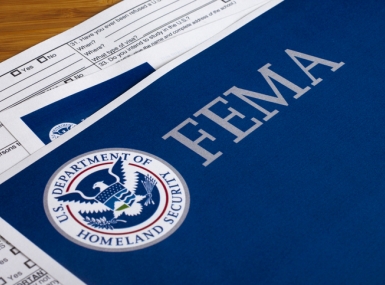Sonoma County shares lessons learned from 2017 Tubbs Fire

Seven years after a devastating fire that killed 40 people and saw thousands evacuated from their homes, Sonoma County, Calif. Emergency Management officials shared solutions they have carved out from that disaster.
Sam Wallis, Sonoma County’s deputy director of emergency management, explained those hard lessons in planning for, and recovering from the fire.
“I want to emphasize the importance of having a good recovery plan and before the disaster starts, implementing it,” Wallis said. “At the start of the disaster, there were so many things that we had never dealt with that we didn’t even know where to start.”
The Tubbs Fire burned more than 36,000 acres throughout Sonoma County and roughly 100,000 people had to evacuate their homes — a massive effort the county wasn’t equipped to handle at the time, Wallis said. The Red Cross had been deployed to Napa County, where the fire started, leaving Sonoma County officials scrambling to house its residents.
“We’d become so reliant on the American Red Cross that we just didn’t have the capability to take care of ourselves,” Wallis said. “It was an awful situation. We had elderly people sleeping on gym mats, and whatever we could get on short notice. We had no shelter staff. We were basically grabbing whoever we could and getting them down there, and of course, they were completely untrained and unprepared for that.”
As a result, Sonoma County created its own shelter capacity for future disasters. All of the cities and unincorporated areas within the county have the capacity to house 1% of its population and have the ability to take care of them independently for 24 hours.
In the event of an evacuation, all cities now have a stockpile of material, and the county has more than 6,000 cots — a large percentage of which are designed to accommodate the elderly and people with disabilities. The county also increases staff when fire weather is predicted, creating task forces and implementing overtime pay, so that a spot fire can be prevented from expanding when it pops up.
To streamline the rebuilding and assistance process for evacuees after a disaster, Sonoma County created a system that compiles an individual’s data, so they’re not forced to continually fill out the same information.
“We want to be able to make sure that we’re taking care of everybody,” Wallis said. “So, once you’re in that system, if when you show up, for instance, at the local assistance center, when the evacuation is over and you’re rebuilding, you already have all the data that you need to do in there, and they just look you up and say, ‘Oh, OK, yeah you showed up at the evacuation center and you’re ready to go,’ and it ties into other services we have.”
People often refuse to evacuate their homes because they don’t want to leave behind their pets, so Sonoma County changed its shelter policy during a disaster, so that pets are now allowed.
In the early hours of the fire, Wallis said that, as director of emergency management, he didn’t know where the fire was, because firefighters and law enforcement were busy banging on people’s doors and getting people out of burning buildings instead of calling and saying, “This is exactly where the fire is.” Now, there are 36 fire cameras set up throughout the county that use artificial intelligence to detect early signs of fire and there are organizational structures set up so that emergency management officials can all quickly get on a conference call to share information.
“The first time I knew where the fire was is when it showed up at the emergency operations center,” Wallis said. “This was a bad situation. We just did not have robust systems for keeping track of that … Now, whenever a small fire breaks out, we know almost immediately where that fire is.”
Related News

States file lawsuit challenging FEMA’s new rules on emergency management grants
On November 4, a coalition of 12 states filed a lawsuit against the U.S. Department of Homeland Security (DHS) and the Federal Emergency Management Agency (FEMA), alleging that recent changes to key emergency management grants are unlawful and could disrupt state and local preparedness efforts.

County Countdown – Nov. 4, 2025
Every other week, NACo's County Countdown reviews top federal policy advocacy items with an eye towards counties and the intergovernmental partnership.
FEMA bill staffers offer insights into reform effort
NACo Intergovernmental Disaster Reform Task Force heard from staffers who helped shape a bill that would make dramatic changes to the Federal Emergency Management Agency.
County News
Atmospheric rivers offer opportunity for Sonoma County reservoirs

